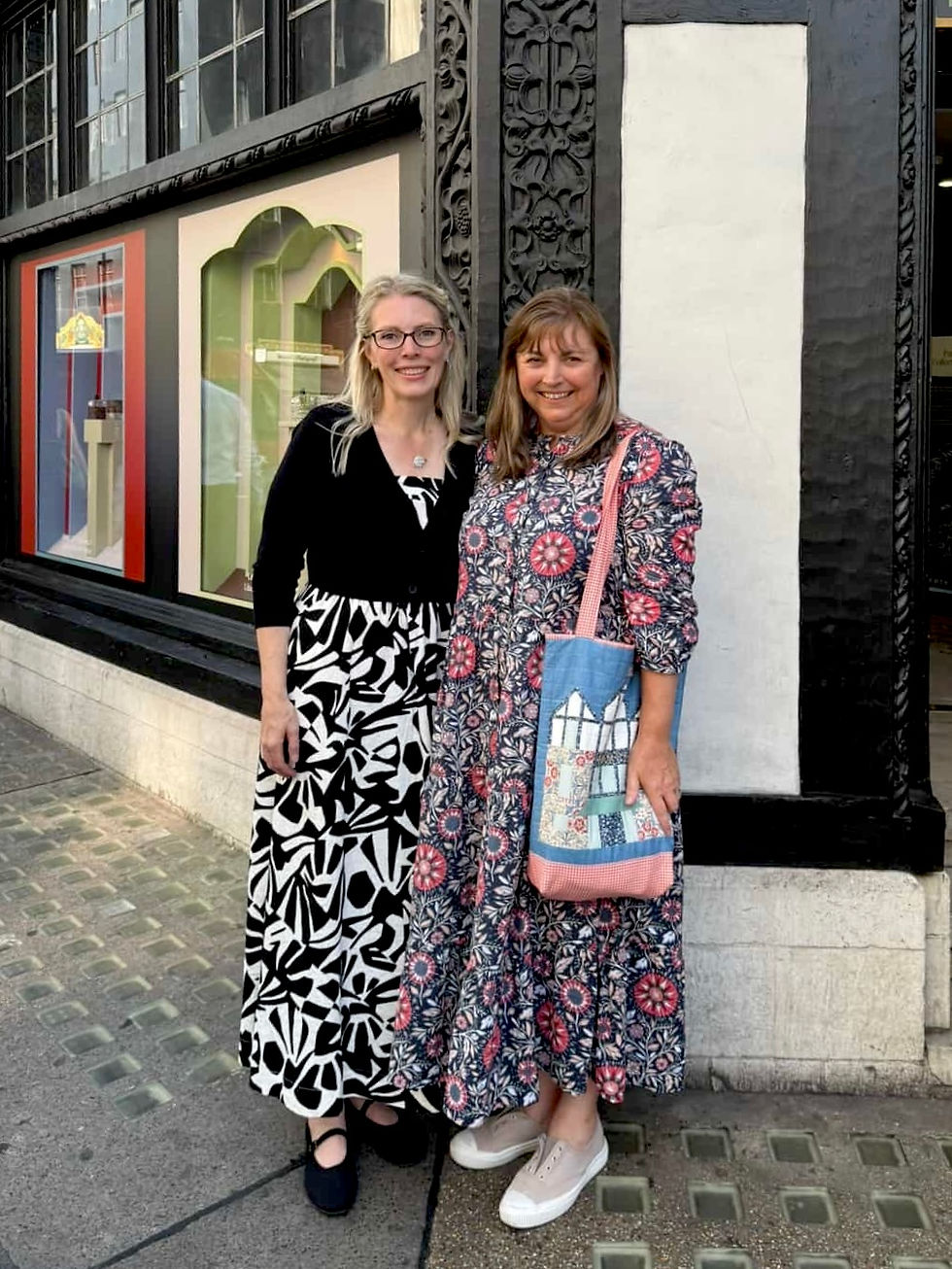British Traditions...
- Nicola

- Mar 15, 2019
- 4 min read
Updated: Mar 4, 2020
This year marks the fortieth anniversary of the Quilters Guild of the British Isles. The Guild was established in 1979 to "...bring together quilters in a spirit of friendship and learning, (to) promote quilt-making in all its forms across the UK (and) as an educational charity (to) preserve the heritage of quilting and work to ensure a vibrant future for the craft..."
Anniversaries are always moments of reflection and there have been some thoughtful pieces written in the Guild's journal by Mary Jenkins and Deb McGuire about the direction of British quilting or even - in the days of global media - if there is such a thing. I have discussed before how I discovered quilting in my own little internet-led bubble, ironically just as the V&A were exhibiting Quilts 1700-2010 Hidden Histories, Untold Stories. And while I will always quietly kick myself for missing it, I do have a (well-thumbed) beautifully illustrated catalogue.
So, having discovered my own heritage as a British quilter in a rather roundabout fashion, how much does it influence me? My suitably roundabout answer is "sort of".

I will put my hand up to reproducing the design of an old quilt. Woodruff and Wintersweet are inspired by antique quilts I found on Pinterest and my Pennine Star Quilt is based on the eponymous Sanderson Star, a classic British design. I can still remember the first time I saw a Sanderson Star in Heather Audin's book Patchwork and Quilting in Britain: it was so breathtakingly graphic that it was hard to believe it was more than a century old. But when I say reproduce, I suspect Miss Sanderson would take a dim view of the way I've broken down her iconic star motif to make it easier to piece. I wrote more about it here.

I've also been inspired by elements in antique quilts: the Spindleberry block is taken from the border of an early eighteenth century quilt in that V&A exhibition catalogue and my Stepping Stones quilt for the Moda Bakeshop is a beginner-friendly take on a tumbling blocks quilt in the Gawthorpe Textile Collection, with a distinctive red background.

The excitement for me when I make a quilt is to put my own spin on it. To piece a traditional motif in a new way, or to use traditional piecing to make an original block. To play with the composition, or to draw my inspiration from other textiles, like embroidery or illustration. But I still want to make a quilt that looks great on a bed or draped over the arm of a chair or - be still my beating heart - in a stack...ready for adventure. They must be beautiful and useful. William Morris would approve.
But I also want to enjoy making them. For example, I love the look of appliqued quilts, particularly the way they tell a story. But... I don't enjoy the process of needle turn applique enough to make a whole quilt. So, as my experience grew, I evolved techniques that allowed me to create my Petit Fours series of illustrative blocks with conventional piecing. Sometimes ideas sit in my sketchbook for years before I'm able to figure out how I can make them successfully.

I was recently commissioned by Today's Quilter to make a frame (a.k.a. medallion) quilt, which is a thoroughly British quilting style that predates the block format developed in North America. I'll admit to being a little nervous: frame quilts are so called because multiple borders are added to a central motif and they require some precision. My design is for a quilt to celebrate a wedding - I embroidered the date of my own wedding anniversary at the centre - and I'm looking forward to sharing the results with you in a month or two. Here's a sneak peek of the centre of my quilt...

But as I look at this image I see a motif inspired by a felt applique block made by Joanna Figueroa, an American quilter born in Poland (or perhaps she'd say she was a Polish quilter living in America?). It's made in fabric designed by a Norwegian designer, Tone Finnanger, and stitched together with Italian Aurifil thread. And let us not forget that one of England's earliest quilts, the Leven's Hall Patchwork, was made at the beginning of the eighteenth century with precious scraps of chintz imported from India. British quilting has always had an international flavour.
So what is a British quilt? I would venture to suggest that it is any quilt made by a British quilter. If you're British and you're making a quilt, then that's wonderful. Whether you like to improvise or work from a pattern, use a block or frame layout, make king-size or doll quilts, stitch with a machine or by hand, using printed or hand-dyed fabric, in reproduction or contemporary colours, please just keep making. But be a love, think about joining the Quilter's Guild or your local quilting group. The best way you can help to preserve our precious heritage is by keeping those skills alive. You are the future of British Quilting. To misquote a famous poster: KEEP CALM & QUILT ON.
Nicola xx




Comments